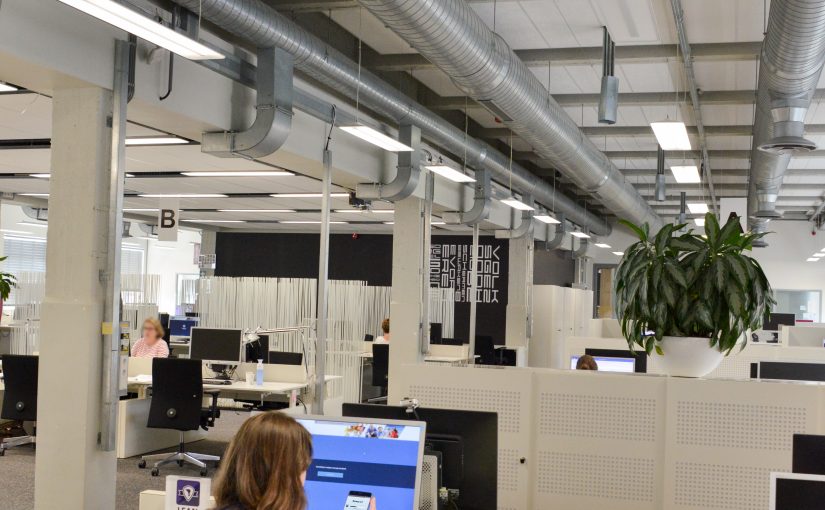This work is published and presented at CHI 2019.
Adopting the Internet of Things paradigm in office lighting systems allows people to have personal lighting control at their workplace. An understanding of how people experience lighting interaction in their everyday work-life is needed to design the interfaces that people can use to interact with the lighting. Still, lighting control is often explored in lab settings.
We designed and deployed two lighting control interface in a real-life office equipped with a state-of-the-art lighting system of 400+ luminaires. We evaluated their experience with the lighting system and the lighting control interfaces. In ten weeks, 43 office workers interacted with the system 3937 times.



The findings of the study illustrate the effects of using a smartphone for lighting control, how people experience lighting control in shared situations, and issues with automatic system behaviour. We define design considerations for interface characteristics, shared control, and hybrid control. The work contributes to making the potential benefits of interactive office lighting a reality.
| Interface Characteristics | Shared Control | Hybrid Control | |||
| Availability of Control | Control Definition | Inform Awareness | Support Coordination | System Initiative | System Accountability |
| Location Ownership Modality | Parameter definition Resolution Noticeability | Information needs Enforce Identity Accountability | Availability Visibility Expressivity | Appropriateness Engage in a dialogue User override | Contextual understanding Motivation Priority |
Results
10 weeks of use was evaluated with 23 study participants. The findings of the study illustrate the effects of using a smartphone for lighting control, how people experience lighting control in shared situations, and issues with automatic system behaviour. The result is a set of design considerations for interfaces, shared control, and automatic system behaviour. More details can be found in the CHI 2019 publication.
3937
Lighting adjustments were made
10%
Increase of lighting appraisal
43
Residents interacted with the applications
3
Published articles in professional and scientific venues
